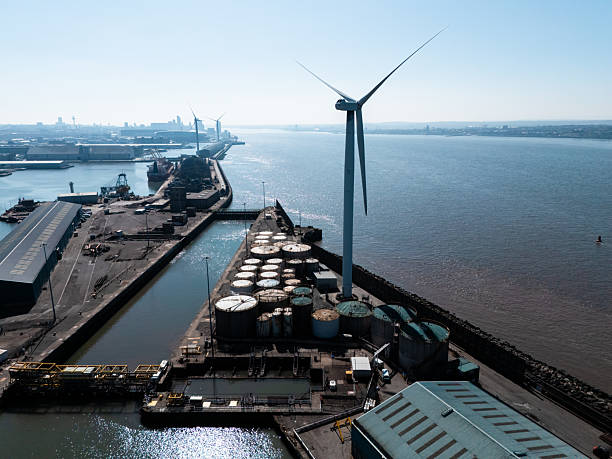Introduction
The logistics sector is undergoing a transformation, and air freight growth is leading the charge. As global trade continues to evolve, air cargo has become increasingly important in ensuring swift, efficient transportation of goods worldwide. A report on the Dube Cargo Terminal at King Shaka International Airport in South Africa reveals an impressive 7% year-on-year increase in air freight volumes. This growth is primarily driven by the rise in perishable exports and high-value goods.
In this article, we’ll explore the key drivers behind air freight growth, factors contributing to its expansion, and what this means for businesses and consumers alike. We’ll also delve into the future of air cargo and what industry stakeholders can expect in the coming years.
The Role of Perishable Exports in Air Freight Growth
Air freight growth is closely linked to the increasing demand for perishable exports. Perishable goods, such as fresh produce, flowers, and seafood, require fast and efficient transportation to maintain their quality. Air transport is the ideal mode for these products due to its speed and reliability. In particular, the rise of global e-commerce and the increasing availability of perishable goods in emerging markets have fueled the demand for quick delivery solutions.
Airports like King Shaka International Airport have seen substantial growth in perishable exports, driving the air freight growth in the region. The ability to move such goods quickly and efficiently ensures that businesses can meet the demands of global consumers and maintain the quality of their products.
High-Value Goods: A Key Contributor to Air Freight Growth
Another significant contributor to air freight growth is the rising demand for high-value goods. Items such as electronics, pharmaceuticals, and luxury products require air transport due to their high value and need for security. Air freight provides the speed, safety, and reliability necessary for transporting these goods internationally.
This trend is especially evident in regions with burgeoning economies, where there is an increasing appetite for luxury goods and advanced technology. The transportation of these high-value items is often time-sensitive, further driving the demand for air cargo services. As more industries turn to air freight to move valuable goods, this segment of the market will continue to expand, contributing to overall air freight growth.
E-Commerce and the Rise of Air Cargo
The booming e-commerce sector has had a profound impact on air freight growth. With online shopping becoming more prevalent, there is a growing need for faster and more reliable delivery options. Consumers expect quick deliveries, and businesses must find ways to meet these expectations. Air freight is increasingly the preferred choice for time-sensitive shipments.
As global online retailers expand their reach, air cargo provides a critical service in fulfilling customer orders. This shift toward faster, more efficient delivery methods has led to an increase in air cargo demand. As e-commerce continues to thrive, air freight growth will undoubtedly continue, benefiting businesses and consumers alike.
Technological Advancements Driving Air Freight Efficiency
The efficiency of air freight operations has greatly improved thanks to technological innovations. Advancements in tracking systems, automation, and data analytics have streamlined the air cargo process, reducing delays and increasing overall throughput. These technological improvements allow for better management of cargo, better forecasting, and more efficient use of available resources.
Automation, in particular, plays a crucial role in speeding up the loading and unloading processes, which directly contributes to air freight growth. With increased efficiency, airlines and cargo handlers can meet the growing demand for quick and reliable delivery, helping the industry scale rapidly.
The Impact of Global Supply Chains on Air Freight Growth
Global supply chains are another driving force behind air freight growth. With manufacturers and suppliers located around the world, the demand for efficient logistics solutions has never been greater. Air freight provides a fast and secure method of transporting goods between countries, allowing businesses to keep up with the complexities of global supply chains.
As companies seek to streamline their supply chains, they are increasingly turning to air freight for just-in-time delivery. This ensures that materials arrive at manufacturing facilities on time, preventing production delays. As global supply chains become more integrated, the demand for air cargo services will continue to rise, contributing to air freight growth.
Environmental Considerations and Sustainable Air Freight
Sustainability is becoming a key consideration for industries worldwide, and air freight is no exception. While air transport is often seen as less environmentally friendly than other modes of transportation, the industry is making strides toward reducing its carbon footprint. Airlines are investing in more fuel-efficient aircraft, and there are ongoing efforts to use sustainable aviation fuel (SAF) to reduce emissions.
As sustainability becomes more important to both consumers and businesses, the air freight sector is responding with greener practices. This shift toward more sustainable air cargo solutions will contribute to the ongoing growth of the industry, ensuring that air freight can continue to meet the demands of the global market while minimizing its environmental impact.
Regional Growth and the Expansion of Air Freight Infrastructure
The growth of regional air cargo hubs is another important factor driving air freight growth. Airports around the world are expanding their cargo facilities to accommodate the increasing demand for air freight services. This includes investing in new infrastructure, such as larger cargo terminals and better transport links.
For example, Dube Cargo Terminal at King Shaka International Airport has seen impressive growth in its cargo operations, which is a reflection of broader trends in the industry. As more airports invest in air freight infrastructure, they will be able to handle larger volumes of cargo, further supporting the expansion of air freight services.
FAQs
1. What is air freight growth?
Air freight growth refers to the increase in the volume of goods being transported by air. This growth is driven by various factors, including higher demand for perishable exports, high-value goods, and faster delivery times in global e-commerce.
2. How does air freight growth impact businesses?
The rise in air freight growth enables businesses to reach global markets faster, ensuring quick and reliable delivery of goods, especially for time-sensitive or high-value items.
3. What factors are contributing to air freight growth?
Key contributors to air freight growth include the rising demand for perishable exports, increased e-commerce activities, high-value goods, technological advancements, and expanding global supply chains.
Conclusion
In conclusion, air freight growth is a significant trend that is reshaping global logistics. The sector’s expansion is driven by factors such as the demand for perishable exports, high-value goods, technological advancements, and the rise of e-commerce. As these factors continue to evolve, the air freight industry is expected to remain a crucial component of global trade, with ongoing growth anticipated in the coming years.




